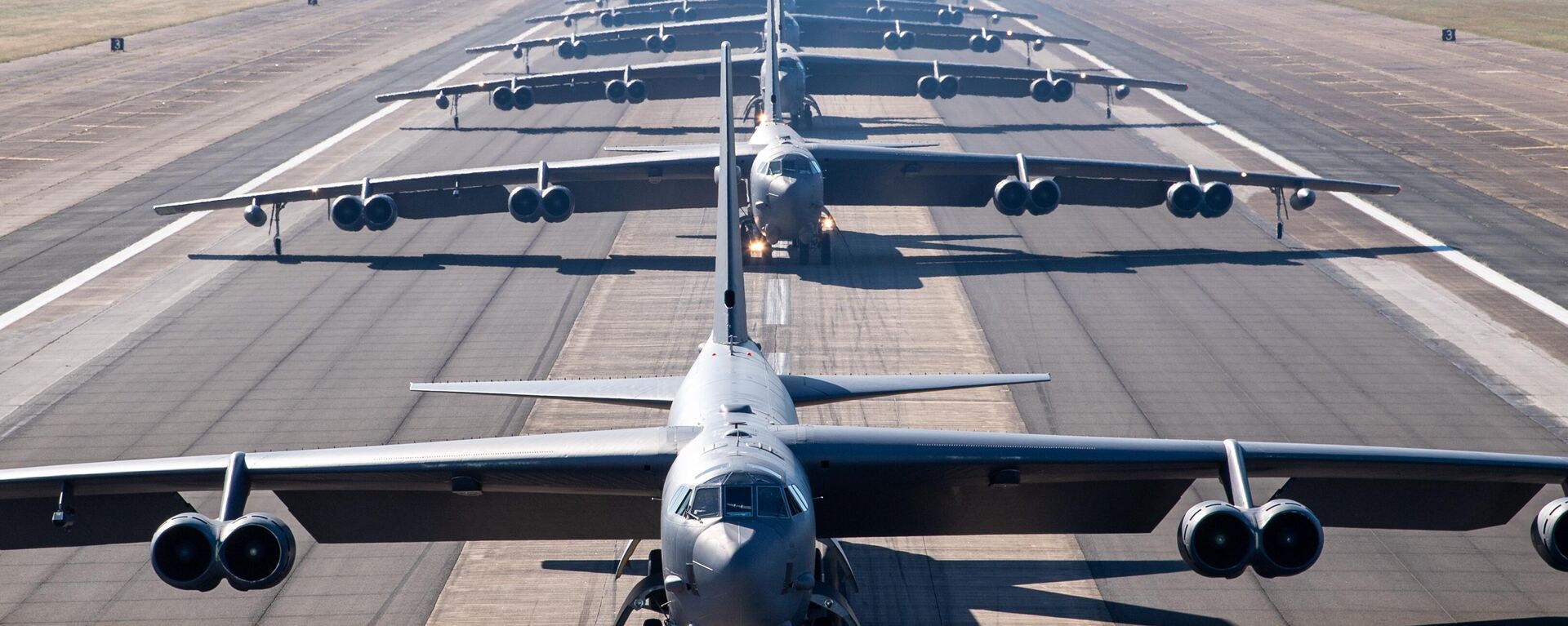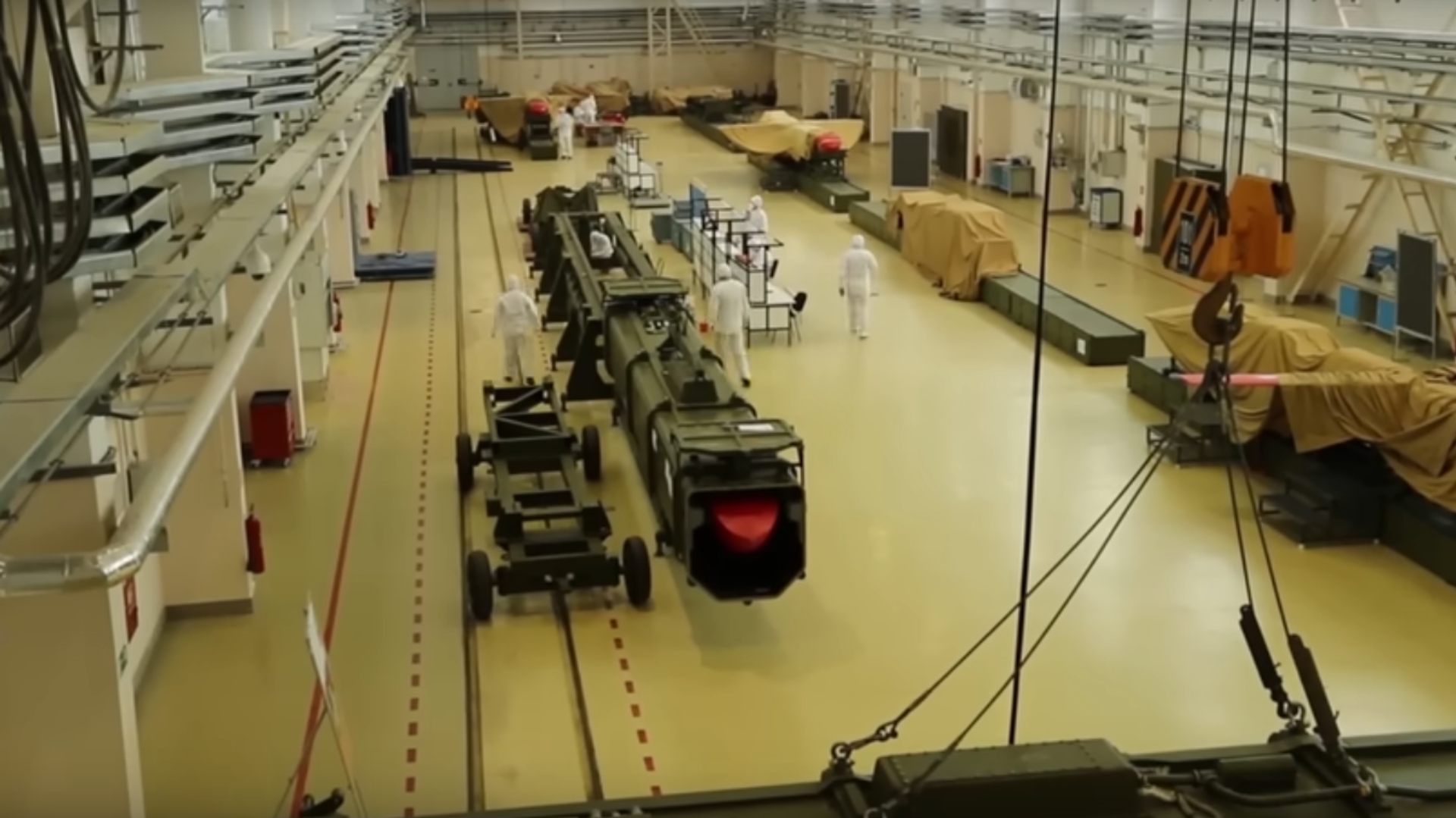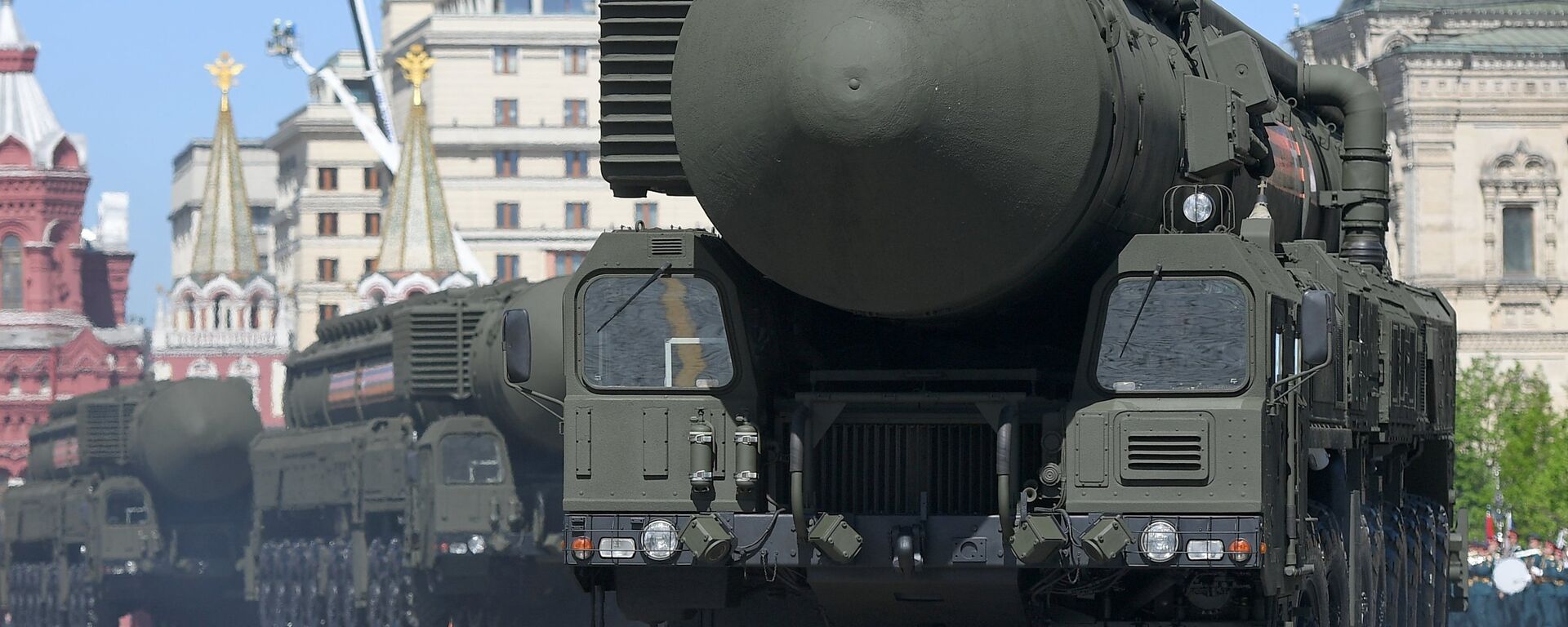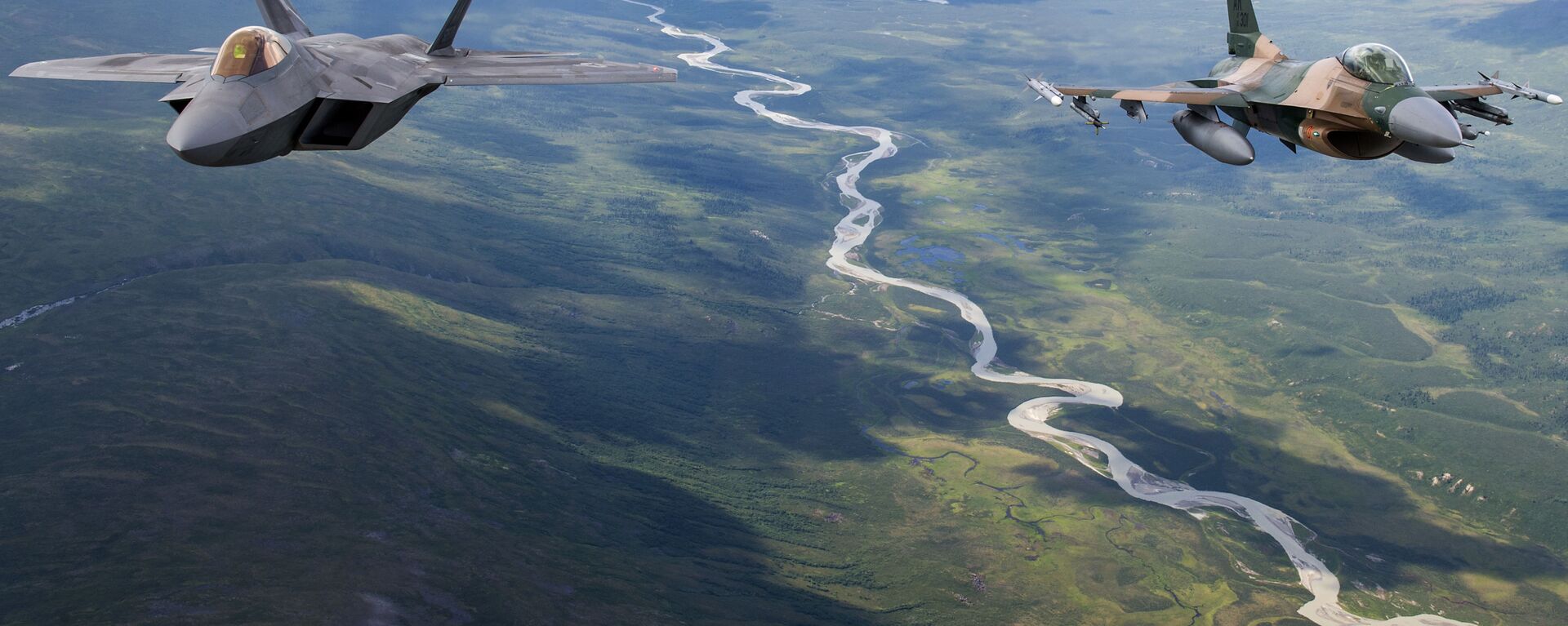https://sputnikglobe.com/20231006/how-russian-stormbringer-nuclear-cruise-missile-can-help-bankrupt-us-war-machine-1113988401.html
How Russian Stormbringer Nuclear Cruise Missile Can Help Bankrupt US War Machine
How Russian Stormbringer Nuclear Cruise Missile Can Help Bankrupt US War Machine
Sputnik International
President Putin has confirmed the successful testing of the Burevestnik (‘Stormbringer’), a Russian nuclear-powered, nuclear-capable cruise missile unlike anything that exists in any other nation’s arsenal. What do we know about the weapon? What impact will it have on the global strategic balance? Sputnik reached out to a top expert to find out.
2023-10-06T18:08+0000
2023-10-06T18:08+0000
2023-10-06T18:46+0000
military
russia
moscow
washington
burevestnik
pentagon
nato
voronezh
kh-101
sarmat
https://cdn1.img.sputnikglobe.com/img/07e7/0a/06/1113988973_17:0:1372:762_1920x0_80_0_0_9be5b4b1f290f5af6914c4b56441e0d4.png
“The latest successful test of the Burevestnik, a global-range cruise missile with a nuclear propulsion system, has been carried out,” Russian President Vladimir Putin told attendees of the Valdai Discussion Club in Sochi on Thursday."Today, we have almost wrapped up work on the modern types of strategic weapons which I announced and spoke about several years ago," Putin said, referring his March 2018 speech to lawmakers, during which the president unveiled the Burevestnik and other new strategic weapons designed to ensure global strategic stability amid US moves to surround Russia with missile defenses with offensive capabilities, and Pentagon planning aimed at neutralizing the Russian nuclear deterrent.What Prompted the Burevestnik's Development?Developed alongside other advanced strategic weapons, including the Poseidon nuclear-powered torpedo, the Avangard hypersonic boost-glide vehicle, the Sarmat intercontinental ballistic missile, the Kinzhal air-launched hypersonic quasi-ballistic missile, and the Peresvet laser complex, the Burevestnik is one component of Russia’s multilayered response to the George W. Bush administration’s decision in 2002 to walk out on the 1972 Anti-Ballistic Missile Treaty.Washington’s short-sighted decision prompted Russia to dust off blueprints and prototypes of advanced rocketry and aerospace systems and designs developed in strict secrecy throughout the second half of the 20th century until the end of the Cold War. In the case of the Burevestnik, this involved following in the footsteps of a path forged by the Voronezh-based Chemical Automatics Design Bureau to build a nuclear thermal rocket engine using a liquid hydrogen propellant.The concept of a nuclear-powered engine was born in the late 1940s, at the very dawning of the Soviet rocketry and nuclear programs, with legendary rocket scientist Vitaly Ievlev receiving support from Igor Kurchatov, father of the Soviet atomic bomb, and rocket scientists Sergey Korolev and Mstislav Keldysh, to carry out theoretical work to create such an engine. While work on the program initially focused exclusively on potential military applications, the state soon also realized the tremendous potential of the concept of a nuclear-powered engine being used by spacecraft to make long-distance journeys across the solar system, including to Mars.Ievlev and co’s work eventually led to the creation of the RD-0410 – the USSR’s first and only nuclear-powered rocket engine. Work on the project began in 1966 at the Keldysh Research Center, with multiple successful tests carried out in Voronezh between the mid-to-late 1970s, with a power generation capacity of up to 63 Megawatts achieved by the mid-1980s before work on the project was halted in 1988 by the Gorbachev administration. Ievlev died two years later in 1990.American rocket scientists made their own impressive advances in the field during the same period, with NASA and the Atomic Energy Commission jointly creating a design known as the Nuclear Engine for Rocket Vehicle Application (NERVA), with the experimental, liquid hydrogen-propelled engine built and certified, only to be cancelled by the Richard Nixon administration in 1973 as Washington wound down the US space program after the Moon landings.The Soviet nuclear-powered rocket engine, also powered by liquid hydrogen, with heptane serving as a backup power source, was designed to be able to generate up to 196 megawatts of energy using 37 separate fuel assemblies. However, neither the American nor Soviet designs would provide rockets or spacecraft with the ability to operate continuously over extended periods, with burn time measuring about 45 minutes and 24 restarts in the case of the NERVA, and 60 minutes and 10 restarts in the case of the RD-0410.What is the Burevestnik?The 9M730 Burevestnik cruise missile, NATO reporting name SSC-X-9 Skyfall, is different, with its onboard nuclear power plant designed to provide it with continuous power, operating within the Earth’s atmosphere, for days, weeks or even months at a time, giving the weapon what is for all intents and purposes an unlimited range.Development work on the Burevestnik began in December 2001, shortly after the US announced its intention to withdraw from the ABM Treaty. "Burevestnik," which means "stormbringer," "prophet of a storm," or "petrel" in Russian, was the name given to the prospective cruise missile in 2018, several weeks after its existence was revealed, in an online vote open to the public by the Russian Defense Ministry.While most of the Burevestnik’s characteristics, including its payload, remain under wraps, footage of the weapon released by the military have given experts a rough idea of some of its parameters, with its contours appearing roughly comparable to those of Kh-101 series of ultra-long range cruise missiles, although the Burevestnik appears to be up to two times larger. Additionally, the cruise missile’s wings are visibly situated hanging over the top of the fuselage, rather than below it, as in the case of the Kh-101.The Burevestnik reportedly features a solid propellant-fueled starting engine, with propulsion in flight provided by a nuclear air-breathing (ramjet) or a turbojet engine. The missile has a starting length at launch of about 12 meters, which shrinks to 9 meters in flight as the starting engine drops off.Details on the development and characteristics of the Burevestnik’s small nuclear power plants also remain shrouded in mystery. However, shortly after Putin’s March 2018 speech introducing the weapon, a source told Russian media that scientists had completed testing of a power plant that could be used in cruise missiles and autonomous oceangoing underwater vehicles, hinting that the Burevestnik and the Poseidon use modifications of the same power plant.The Burevestnik has undergone testing on the Russian northern archipelago of Novaya Zemlya, with field testing of its engine completed in January 2019. Additional testing has been reported by various sources as early as June 2016, with a dozen or more launches estimated to have been carried out to date, with the latest in August 2023.NATO Sounds the Alarm“What this will give Russia a capacity for is to take a low-wielding potentially nuclear weapon and then use it to have it travel a greater distance, tens of thousands of miles,” retired US Army Major Mike Lyons told US media Thursday, several hours after Putin’s Valdai speech.“This Burevestnik missile is normally a conventional cruise missile that’s used let’s say inter-theater. This provides a strategic view, though. Let’s say they have this in the Arctic, where they’re testing it right now. They could easily launch this missile from that platform and hit targets in the United States, not using ICBMs,” Lyons explained.Because the Burevestnik is a cruise missile, it should be able to mimic the capabilities of other cruise missiles to perform flights at altitudes as low as 50-100 meters, making it essentially invisible to enemy radar, and detectable only using satellites, and only during launch.Dmitry Kornev, founder of the MilitaryRussia.ru portal, has been following the development of the Burevestnik since its first appearance in 2018.The cruise missile’s main selling point as a universal retaliatory weapon stems from its virtually unlimited range, measuring in “days, weeks or months,” Kornev told Sputnik.The Burevestnik’s unparalleled range characteristics means the missile will be capable of simply maneuvering around air defense systems, traveling toward targets “from a completely unexpected direction,” and thus becoming an effective new component of Moscow’s strategic deterrent capability in light of recent US attempts to neutralize other elements of the Russian nuclear triad.Ultra-long range, combined with maneuverability, differentiates the Burevestnik from a traditional ballistic missile, which flies along a set trajectory, making it easier to intercept, Kornev said. Cruise missiles generally “can perform maneuvers, bend around terrain, go around buildings, structures, islands, continents. And in the case of the Burevestnik, there are no limitations on flight range,” meaning it can go around entire continents, oceans, and even circle the planet multiple times over on route to its destination.Powerful Trump Card for Arms ControlOnce development and testing of the Burevestnik is wrapped up, Moscow will have a choice, according to Kornev – either to introduce the system into service, or use it as a trump card in arms control negotiations with Washington. “This question is still open. That is, no one is saying that Burevestnik cruise missiles will be launched and used tomorrow. But on the basis of this development, a weapons system can be created in short order which no one in the world possesses.”“Of course, the United States will work to figure out how to counter the Burevestnik,” Kornev said. “We must understand that the financial and technological capabilities of the United States are such that if they want to, they will be able to catch up,” if they determine that the Russian nuclear-powered cruise missile program has succeeded.Could Burevestnik Help Bankrupt the Pentagon?As things stand, the observer emphasized that today, the Pentagon has nothing in its arsenal to counter the Burevestnik. “Obviously they will strengthen their air defenses. But that will not be a guarantee that these missiles will not reach their targets.”Issues to Be Ironed Out“Many questions remain” regarding nuclear-powered cruise missiles’ utility, according to the military expert. “Will Russia create a weapons system on the Burevestnik’s basis? Because the ability to launch a missile is one thing, but actually creating a weapons system, training personnel, producing these missiles, accepting them into service and operating them is another,” Kornev noted.There are a number of issues that will have to be ironed out, in Kornev’s view, starting with the fact that cruise missiles are not designed to land safely without being destroyed. “Even during testing, it’s possible that this rocket could fall and be destroyed. In any case, the materials onboard can lead to radioactive contamination,” he warned.Another issue lies in the fact that the Burevestnik is the first system of its kind anywhere in the world.
https://sputnikglobe.com/20221213/21-years-ago-today-us-rips-up-abm-treaty-with-russia-starting-slow-slide-toward-current-crisis-1105420298.html
https://sputnikglobe.com/20230927/what-are-kalibr-and-kh-101-cruise-missiles-and-whats-made-them-so-effective-in-ukraine-1113741543.html
https://sputnikglobe.com/20230621/russias-nuclear-triad-ensures-global-balance-of-power---putin-1111362453.html
https://sputnikglobe.com/20230313/us-defense-budget-funds-170bln-for-procurement-largest-in-history-pentagon-1108351623.html
https://sputnikglobe.com/20231005/report-us-air-force-tested-classified-cruise-missile-fitted-with-mock-nuke-in-2022-1113939089.html
russia
moscow
washington
Sputnik International
feedback@sputniknews.com
+74956456601
MIA „Rossiya Segodnya“
2023
News
en_EN
Sputnik International
feedback@sputniknews.com
+74956456601
MIA „Rossiya Segodnya“
Sputnik International
feedback@sputniknews.com
+74956456601
MIA „Rossiya Segodnya“
stormbringer, burevestnik, russia, united states, cruise missile, nuclear, nuclear-powered, ussr, soviet union, rocket science, unlimited range, long-range
stormbringer, burevestnik, russia, united states, cruise missile, nuclear, nuclear-powered, ussr, soviet union, rocket science, unlimited range, long-range
“The latest successful test of the Burevestnik, a global-range cruise missile with a nuclear propulsion system, has been carried out,” Russian President Vladimir Putin
told attendees of the Valdai Discussion Club in Sochi on Thursday.
"Today, we have almost wrapped up work on the modern types of strategic weapons which I announced and spoke about several years ago," Putin said, referring his March 2018 speech to lawmakers, during which the president unveiled the Burevestnik and other new strategic weapons designed to ensure global strategic stability amid US moves to surround Russia with missile defenses with offensive capabilities, and Pentagon planning aimed at neutralizing the Russian nuclear deterrent.
Putin reiterated that under Russia’s existing nuclear doctrine, Moscow would only resort to using its strategic weaponry in response to enemy aggression, but stressed that Russia’s guaranteed response capabilities would mean “absolutely unacceptable” losses for any potential aggressor.
What Prompted the Burevestnik's Development?
Developed alongside other advanced strategic weapons, including the
Poseidon nuclear-powered torpedo, the
Avangard hypersonic boost-glide vehicle, the
Sarmat intercontinental ballistic missile, the
Kinzhal air-launched hypersonic quasi-ballistic missile, and the
Peresvet laser complex, the Burevestnik is one component of Russia’s multilayered response to the George W. Bush administration’s
decision in 2002 to walk out on the 1972 Anti-Ballistic Missile Treaty.

13 December 2022, 13:36 GMT
Washington’s short-sighted decision prompted Russia to dust off blueprints and prototypes of advanced rocketry and aerospace systems and designs developed in strict secrecy
throughout the second half of the 20th century until the end of the Cold War. In the case of the Burevestnik, this involved following in the footsteps of a path forged by the Voronezh-based Chemical Automatics Design Bureau to build a nuclear thermal rocket engine using a liquid hydrogen propellant.
The concept of a nuclear-powered engine was born in the late 1940s, at the very dawning of the Soviet rocketry and nuclear programs, with legendary rocket scientist Vitaly Ievlev receiving support from Igor Kurchatov, father of the
Soviet atomic bomb, and rocket scientists Sergey Korolev and Mstislav Keldysh, to carry out theoretical work to create such an engine. While work on the program initially focused exclusively on potential military applications, the state soon also realized the tremendous potential of the concept of a nuclear-powered engine
being used by spacecraft to make long-distance journeys across the solar system, including to Mars.
Ievlev and co’s work eventually led to the creation of the RD-0410 – the USSR’s first and only nuclear-powered rocket engine. Work on the project began in 1966 at the Keldysh Research Center, with multiple successful tests carried out in Voronezh between the mid-to-late 1970s, with a power generation capacity of up to 63 Megawatts achieved by the mid-1980s before work on the project was halted in 1988 by the Gorbachev administration. Ievlev died two years later in 1990.
American rocket scientists made their own impressive advances in the field during the same period, with NASA and the Atomic Energy Commission jointly creating a design known as the Nuclear Engine for Rocket Vehicle Application (NERVA), with the experimental, liquid hydrogen-propelled engine built and certified, only to be cancelled by the Richard Nixon administration in 1973 as Washington wound down the US space program after the Moon landings.
The Soviet nuclear-powered rocket engine, also powered by liquid hydrogen, with heptane serving as a backup power source, was designed to be able to generate up to 196 megawatts of energy using 37 separate fuel assemblies. However, neither the American nor Soviet designs would provide rockets or spacecraft with the ability to operate continuously over extended periods, with burn time measuring about 45 minutes and 24 restarts in the case of the NERVA, and 60 minutes and 10 restarts in the case of the RD-0410.
The 9M730 Burevestnik cruise missile, NATO reporting name SSC-X-9 Skyfall, is different, with its onboard nuclear power plant designed to provide it with continuous power, operating within the Earth’s atmosphere, for days, weeks or even months at a time, giving the weapon what is for all intents and purposes an unlimited range.
Development work on the Burevestnik began in
December 2001, shortly after the US announced its intention to withdraw from the ABM Treaty. "Burevestnik," which means "stormbringer," "prophet of a storm," or "petrel" in Russian, was the name given to the prospective cruise missile in 2018, several weeks after its existence was revealed, in an online vote open to the public by the Russian Defense Ministry.
While most of the Burevestnik’s characteristics, including its payload, remain under wraps, footage of the weapon released by the military have given experts a rough idea of some of its parameters, with its contours appearing roughly comparable to those of
Kh-101 series of ultra-long range cruise missiles, although the Burevestnik appears to be up to two times larger. Additionally, the cruise missile’s wings are visibly situated hanging over the top of the fuselage, rather than below it, as in the case of the Kh-101.

27 September 2023, 17:30 GMT
The Burevestnik
reportedly features a solid propellant-fueled starting engine, with propulsion in flight provided by a nuclear air-breathing (ramjet) or a turbojet engine. The missile has a starting length at launch of about 12 meters, which shrinks to 9 meters in flight as the starting engine drops off.
Details on the development and characteristics of the Burevestnik’s small nuclear power plants also remain shrouded in mystery. However, shortly after Putin’s March 2018 speech introducing the weapon, a source
told Russian media that scientists had completed testing of a power plant that could be used in cruise missiles and autonomous oceangoing underwater vehicles, hinting that the Burevestnik and the Poseidon use modifications of the same power plant.
The Burevestnik has undergone testing on the Russian northern archipelago of Novaya Zemlya, with field testing of its engine
completed in January 2019. Additional testing has been reported by various sources as early as June 2016, with a
dozen or more launches estimated to have been carried out to date, with the latest in August 2023.
“What this will give Russia a capacity for is to take a low-wielding potentially nuclear weapon and then use it to have it travel a greater distance, tens of thousands of miles,” retired US Army Major Mike Lyons
told US media Thursday, several hours after Putin’s Valdai speech.
“This Burevestnik missile is normally a conventional cruise missile that’s used let’s say inter-theater. This provides a strategic view, though. Let’s say they have this in the Arctic, where they’re testing it right now. They could easily launch this missile from that platform and hit targets in the United States, not using ICBMs,” Lyons explained.
In 2020, then-UK Chief of Defense Intelligence Lt. Gen. Jim Hockenhull
warned that the Burevestnik has what is effectively a “global reach and would allow attack from unexpected directions,” giving Moscow a weapon with a “near infinite loiter time.” Combined with the capabilities of the Poseidon, this would “allow the Russians to hold the UK and its allies’ civilian and military infrastructure at risk of both direct attack both with conventional explosives and nuclear weapons, limiting options or raising the stakes during times of crisis,” Hockenhull said.
Because the Burevestnik is a cruise missile, it should be able to mimic the capabilities of other cruise missiles to perform flights at altitudes as low as 50-100 meters, making it essentially invisible to enemy radar, and detectable only using satellites, and only during launch.
Dmitry Kornev, founder of the MilitaryRussia.ru portal, has been following the development of the Burevestnik since its first appearance in 2018.
The cruise missile’s main selling point as a universal retaliatory weapon stems from its virtually unlimited range, measuring in “days, weeks or months,” Kornev told Sputnik.
“This means that such missiles can be launched and remain in flight over a holding area for up to several months, and can alter these holding areas at will. In this state, it would be extremely difficult to catch and destroy them. At the moment, there are no systems that could reliably detect these missiles in their holding areas and destroy them. And in the event of ‘X hour,’ if an order was received providing information about targets…these missiles could proceed to their targets and strike them,” the observer explained.
The Burevestnik’s unparalleled range characteristics means the missile will be capable of simply maneuvering around air defense systems, traveling toward targets “from a completely unexpected direction,” and thus becoming an effective new component of Moscow’s strategic deterrent capability in light of recent US attempts to neutralize other elements of the Russian nuclear triad.
Ultra-long range, combined with maneuverability, differentiates the Burevestnik from a traditional ballistic missile, which flies along a set trajectory, making it easier to intercept, Kornev said. Cruise missiles generally “can perform maneuvers, bend around terrain, go around buildings, structures, islands, continents. And in the case of the Burevestnik, there are no limitations on flight range,” meaning it can go around entire continents, oceans, and even circle the planet multiple times over on route to its destination.
“This is a completely new component of our nuclear deterrent force,” the observer stressed, saying it will effectively help turn Russia’s nuclear triad of ground-based, air, and submarine launched missiles into a quartet.
Powerful Trump Card for Arms Control
Once development and testing of the Burevestnik is wrapped up, Moscow will have a choice, according to Kornev – either to introduce the system into service, or use it as a trump card in arms control negotiations with Washington. “This question is still open. That is, no one is saying that Burevestnik cruise missiles will be launched and used tomorrow. But on the basis of this development, a weapons system can be created in short order which no one in the world possesses.”
“Systems providing guaranteed retaliation essentially put an end to the traditional strategic nuclear weapons systems arms race,” Kornev says. According to the observer, Russia’s possession of weapons like the Burevestink and the Poseidon could force the United States and other major nuclear powers to the negotiating table, and finally put an end to a situation – initiated by Washington over 20 years ago, in which there are now almost no agreements left to ensure effective arms control between the nuclear superpowers.
“Of course, the United States will work to figure out how to counter the Burevestnik,” Kornev said. “We must understand that the financial and technological capabilities of the United States are such that if they want to, they will be able to catch up,” if they determine that the Russian nuclear-powered cruise missile program has succeeded.
Could Burevestnik Help Bankrupt the Pentagon?
As things stand, the observer emphasized that today, the Pentagon has nothing in its arsenal to counter the Burevestnik. “Obviously they will strengthen their air defenses. But that will not be a guarantee that these missiles will not reach their targets.”
“It’s likely the United States will choose to create space-based means to detect such missiles. If one knows where such missiles are flying, it will be possible for any fighter jet to shoot them down…But then it would be necessary to create a detection system, to build a system for the transmission of information – to radically modernize the entire air defense system of North America, probably Europe and other countries threatened by such a weapons system. These are colossal costs in any case. And it may very well be the case that these costs significantly exceed the cost of creating Burevestnik-type missiles,” Kornev stressed.
“Many questions remain” regarding nuclear-powered cruise missiles’ utility, according to the military expert. “Will Russia create a weapons system on the Burevestnik’s basis? Because the ability to launch a missile is one thing, but actually creating a weapons system, training personnel, producing these missiles, accepting them into service and operating them is another,” Kornev noted.
There are a number of issues that will have to be ironed out, in Kornev’s view, starting with the fact that cruise missiles are not designed to land safely without being destroyed. “Even during testing, it’s possible that this rocket could fall and be destroyed. In any case, the materials onboard can lead to radioactive contamination,” he warned.
Another issue lies in the fact that the Burevestnik is the first system of its kind anywhere in the world.
“We have no experience, there is no experience anywhere in the world; we will be ‘on the front line’ here, so to speak, and it’s on the front line that problems often ‘arrive.’ So of course there are certain risks. But if we approach this question thoughtfully, carefully, and using all of our scientific potential, we will surely be able to create something unique,” the observer summed up.

5 October 2023, 02:55 GMT









